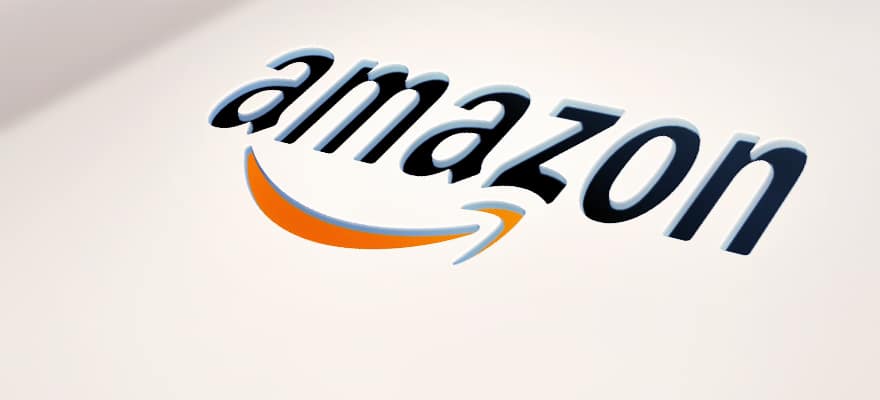The payment of online transactions is spreading from our desktop computers to our smartphones and tablets and it seems hard to think about further platforms to adapt to.
The utmost familiar media device, the television set, has received quite some technological upgrades during the last couple of years. Television sets are now turning from preset receivers and monitors for external content to fully capable smart devices which allow for a plethora of media and content streaming options in addition to their cable and satellite receiver abilities.
The question arises as to how one can integrate convenient payment options to a device which knows only one input option: the remote control.
This is where SmartPay.TV comes in.
SmartPay.TV is currently the only company providing in-app payment solutions for smart TV application developers. SmartPay.TV’s solution has made placing Payments through a smart TV a convenient and painless yet secure process, that only requires numeric input and a 4 digit pin code. We interviewed Noam Josephides, the CEO of SmartPay.TV, and asked him to show us how they have conquered the issues of creating fast, efficient and simple payments on smart TVs.

Payment Magnates: Can you please tell us a bit about SmartPay.TV, and how it came to be?
Noam Josephides: Smartpay.TV was born from a “pain” that we were experiencing when I was working for a company who specialized in developing smart TV apps for the likes of Samsung and LG. We were one of the first to provide VOD app services for smart TVs, and one of the apps that we developed quickly became the most downloaded smart TV app, called the Bollywood Movie Channel, that centered on the Indian movie industry. We were struggling with the idea of how to monetize these hundreds of thousands of users, without any payment solutions available for the app developers.
We started researching and exploring the top brands in the industry that provide payment solutions and we found that none of the payment solutions available would work on a smart TV. There were technological restrictions, like not being able to open an iFrame from within an app, or not being able to interlink between apps to open the payment solution app. There were also security issues, and convenience issues. With entering all of your details like email, billing address and full name with an on-screen keyboard using your device’s remote control, we found that the majority of users simply did not complete the process for it being too complicated. We saw what other app developers and service providers were doing was utilizing a second screen device like a computer to complete the purchase. Apps that do this will present you with a code, and a URL, and requires you to go over to your computer and complete the purchase with the provided code and your payment details, and then will return a response code that needs to be entered back into your TV set. When we tried the dual screen method, we saw a conversion ratio of 1.4%. This is not the conversion ratio of the app, but the ratio of users who survived the long and painful payment process we call the “Pain of paying”.
We then approached the TV manufacturers to develop for and with them a payment solution that is tailored to their respective platforms and is designed for their devices. That is how SmartPay.TV came to life. We started with Samsung devices, and now we support most of the major brands, like LG, Toshiba, Philips, Panasonic, android set top devices that includes smartphones and tablets, and our list is still growing as we continue to port the system to support more devices.
The main features we decided were important for smart TVs were all thought up from the consumer’s point of view. We wanted to offer them the option to input their information without the use of an alphanumeric keyboard, so we developed a special feature for our system, that we of course regulated in front of the card processing companies to allow us to request only numeric information, like the card number, expiration date and CVV. We were able to make this possible due to access that was granted to us by the TV manufacturers to a low level onboard unique identifier that cannot be duplicated or “spoofed”. Afterwards, we wanted to make the process even simpler than having the user punch in his card number with the remote on every purchase, but to have him enter it only once, and generate a pin code for future purchases. We developed the product to be a cross application solution, so a user who defines a pin code, can simply enter that very same code into another app to complete the purchase there. We currently see 86% of users choosing to define a pin code. Those numbers mean that the chances of future purchases are 5 times higher as if they were asked to enter their details again upon each purchase.
The product is cross-brand, cross-application, we provide support for 50 currencies, and our system is available in 15 languages. We support single payments, recurring payments and dynamic prices. Any developer can logon to our website, open an account, and receives their 2 lines of code needed to accept purchases, free of charge.

PM: With cable companies coming to agreements with online content developers. Do you see a threat or can SmartPay.TV find its place as well on cable boxes?
NJ: In that aspect, we see 2 different and distinct points of view from the service providers. Certain cable companies say that they will offer a new generation of set top boxes that provide their paid services, and an app ecosystem; however they want to aggregate all the billing, content and apps, to your cable bill. Another point of view we are seeing more of from other companies, is the opposite, and that aggregating their bill can backfire. If a consumer receives a high amount cable bill that includes his cable plan and all of the content he purchased through apps, he will most likely get angry at the cable company. These companies are trying to prevent consumer rage, by separating the bills, by providing their service bill, and a different bill for app content. They are also allowing billing to be done independently, and may come to a commercial agreement with the developers for a percentage of the revenues.
PM: Smart TVs come in different formats and operating systems, how does SmartPay.TV fit in to such a diverse market place?
NJ: The smart TV market is very fragmented, and each brand has its own proprietary operating system. So we developed a single cross-brand app that we continue to update along with the operating systems. We devised the whole system to allow the developer to copy and paste only 2 lines of code in his app code to initiate the payment widget.
As for operating systems, there is quite a debate on whether to develop and maintain a proprietary OS, like Samsung. If your company is big enough, then it is worth it to have your own operating system so you can take control of your market, and have developers design apps for your specific devices. If you are a smaller manufacturer, it makes more sense to partner up, like what we are seeing from Toshiba, Philips and Panasonic who came together to form the Smart TV Alliance. That means that these companies will share a common infrastructure, a common SDK, and probably a common app store. This kind of partnerships makes sense, because they share resources, and maintain the ecosystem together. And for a developer that would be best, for the same amount of effort you will receive larger exposure, and availability on more devices. And there are the open source operating systems like Android. We see that eventually, in similar to the mobile market, we will have 3-4 relevant operating systems with a big enough market share to maintain it.

PM: Can you give us some numbers on the growth of smart TV payments, and where you see the market place in the near future?
NJ: We see smart TV as the fastest growing segment in consumer electronics, with 35% growth every year. In addition to the TVs we are seeing more solutions coming out such as set-top boxes, hybrid set-top boxes and dongles, something we like to call “Smart TVs in a box”. We feel that these boxes are going to be big, with their low price in comparison to full-fledged TVs. Today we see that there are already tens of millions of devices operating around the world, with a 70% connection rate. We are also seeing that our average weekly usage of a customer who uses the apps on his TV is using it about 3 times a week. Of course these numbers vary from region to region, and where there is less available content, the numbers will be lower.
PM: We mostly hear about security issues when it comes to online purchases, mostly on alternative outlets. Are there any security issues when it comes to Smart TV purchases?
NJ: Having developed the SmartPay.TV system specifically for television devices was both an advantage and a challenge. The challenge was figuring out how we can make this secure enough and simple enough for the user with the diverse fragmentation in the market. If the customer were to put in all his details as he would with a web form, it would be secure, but it would not work, we are back to square one. What we needed to do is to partner up with the manufacturers so we can have access to their non-hackable hardware identifiers. We are not relying on IP addresses or MAC addresses but we are relying on hardware based identifiers in order for us to be able to pin-point which transaction came from which device with 100% assurance. This enabled us to both process a payment using only the numerical information of the credit card, and moreover to allow the consumer to set a pin code. So when the pin code is entered by the consumer, we can see the specific device ID.
Another security feature we have is to protect the user data from the developers. Once our widget is open the developer is shut out of any communication with the end-user, and they are not able to record any keystrokes, or to tell what buttons were pressed during the transaction process. These security features are unique to SmartPay.TV.
In contrast to web and mobile transactions, there are significantly less chargebacks and fraud cases on smart TVs; this is because most of the services are premium services. Smart TVs are not quite able to be hacked with their limited internet capabilities and the unique OS as easily as a PC. Consumers treat the payment of content as part of the TV watching experience and not as web content. With DRM and no piracy, there is less chance of consumers filing chargebacks. Since we are also able to pin-point the exact device the payment came from in case of fraud we can block the device from making further payments.
PM: Are there any certain regions or markets that you support?
NJ: We are a global payment solution. We have no blacklist for countries or currencies. The companies that we are developing for are also global brands like Samsung, and LG. As long as the device supports a certain region, so does SmartPay.TV.
PM: Do you cater to specific app developers or to all developers? Is there a screening process?
NJ: Today, the smart TV manufacturers are much more conservative in the types of content that they will allow in comparison to the mobile market. There few reasons for this. The main reason, is technical, if you are buying a $5000 set top and a harmful app was downloaded that made it crash, you would return it to the store at high cost for the manufacturer. So the manufacturers are very careful with the apps they approve. It can take between 4-6 months to get your first app approved and launched due to the long and meticulous QA that the manufacturers implement on every app. This is an advantage and a disadvantage. From the time that we acquire a new developer until the time he is able to process transactions, it can take months. The advantage is that we work with developers that have been certified by manufacturers for appropriate content, with proper copyright, with significant developing skills.
PM: What is your fee structure?
NJ: There are not setup or signup fees for developers. The fees structure is transaction based. For developers who plan to offer global apps, we offer global risk rates and our fees start at 3.5% and go down with volume.

















